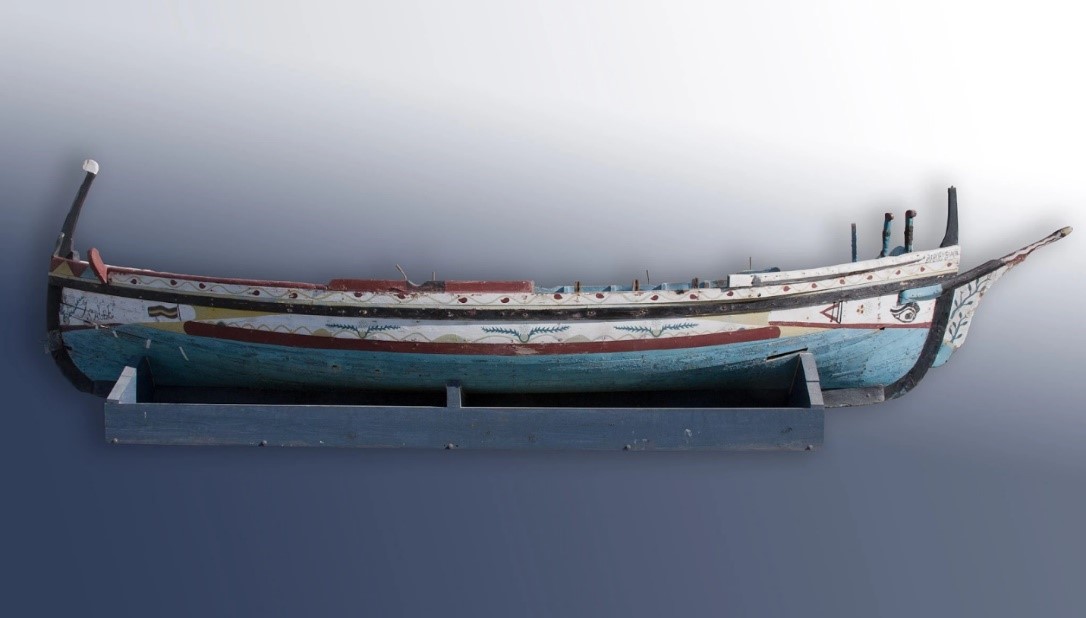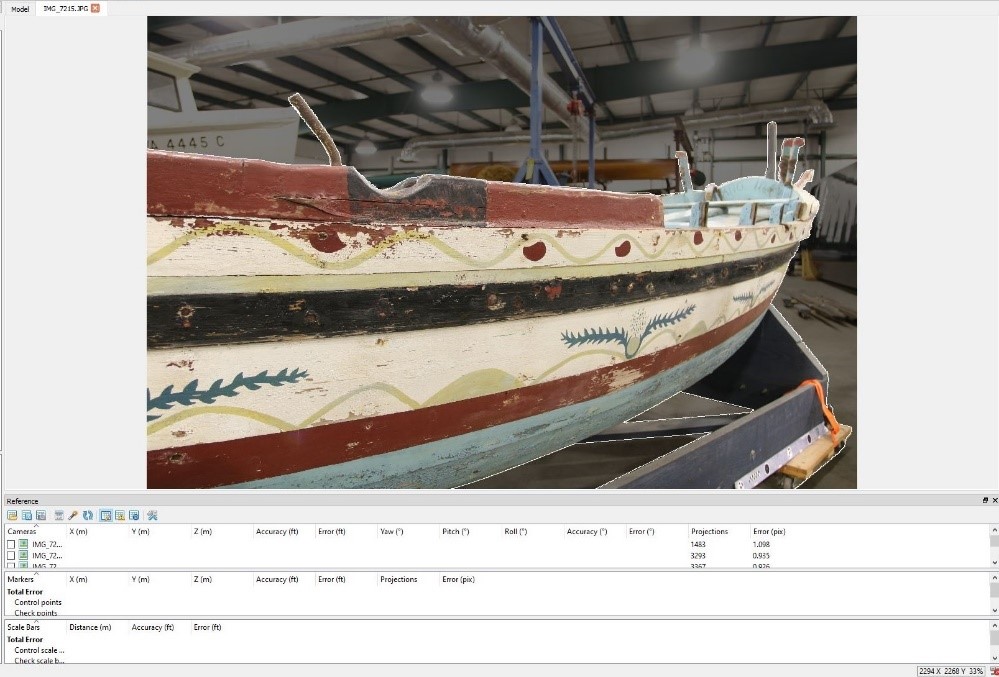Hi everyone!
Last time I wrote on our blog, I was discussing my work with Princess Carolina (i.e. Ronson) as a graduate conservation intern. Well, since then, I’ve finished up my graduate program and have started an exciting new project working with another one of our amazing vessels: La Isabel!
The Bronze Door Society, an affinity group of The Mariners’ Museum and Park, graciously supported a project that would fund an intern to assess La Isabel’s condition so we can understand what kind of treatment it’ll need. Check out their website here.
I’m acting as that Bronze Door Society Conservation Intern and so I want to spend some time telling you all about this project as it progresses. I’ll be posting several times about this, so be on the lookout for future blogs!
Background
La Isabel is a Jábega boat, a traditional fishing trawler from Málaga, Spain. It was built in 1925 and came to The Mariners’ Museum and Park in 1933 not long after the Museum opened. The vessel shares a rich history both at the Museum as one of our original small craft accessions and as part of the Jabegote culture, a tradition specific to Malaga filled with unique customs, songs, and linguistics (González, 2018: 4). It truly is an incredible vessel!
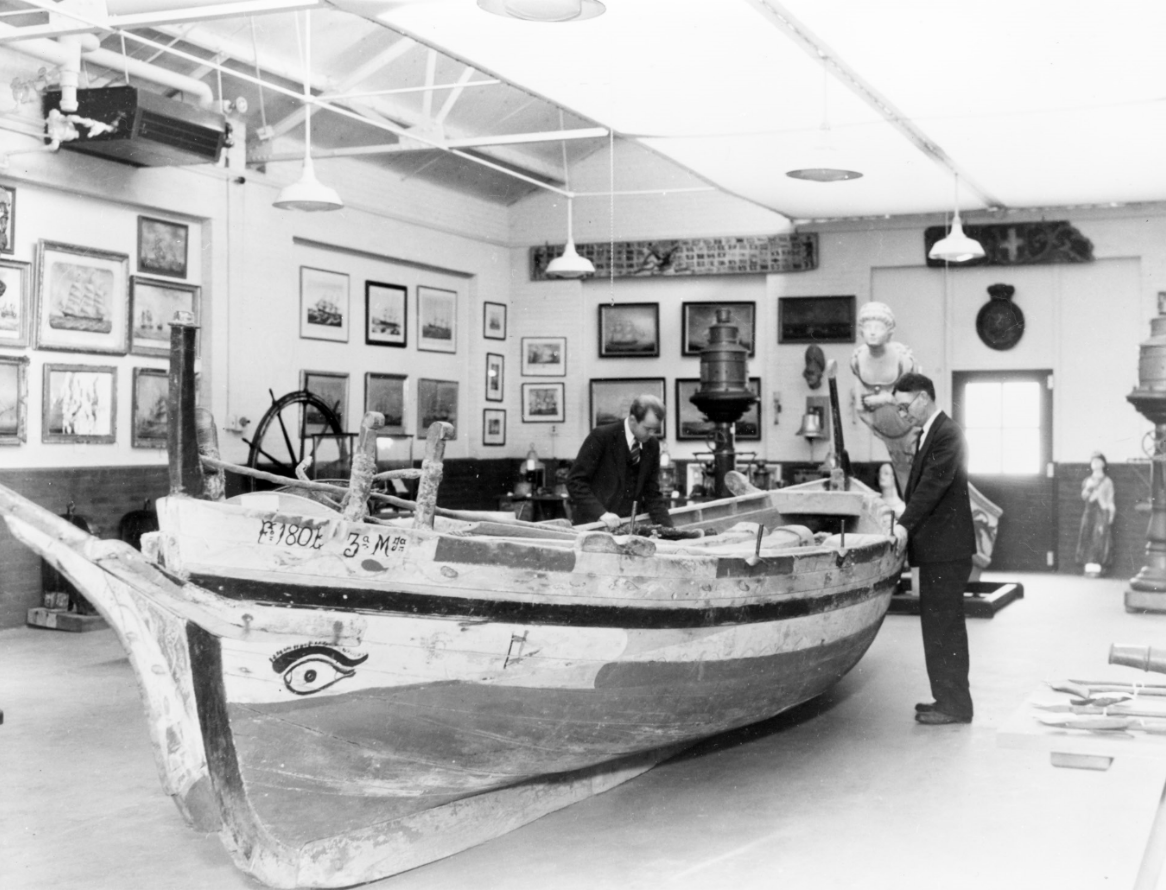
Unfortunately, we’ve noticed La Isabel appears to be having stability issues, so we want to investigate its condition in preparation for eventual conservation treatment. During this internship, I’ll specifically be looking into structural issues such as the detached gunwale you can see in the image below.
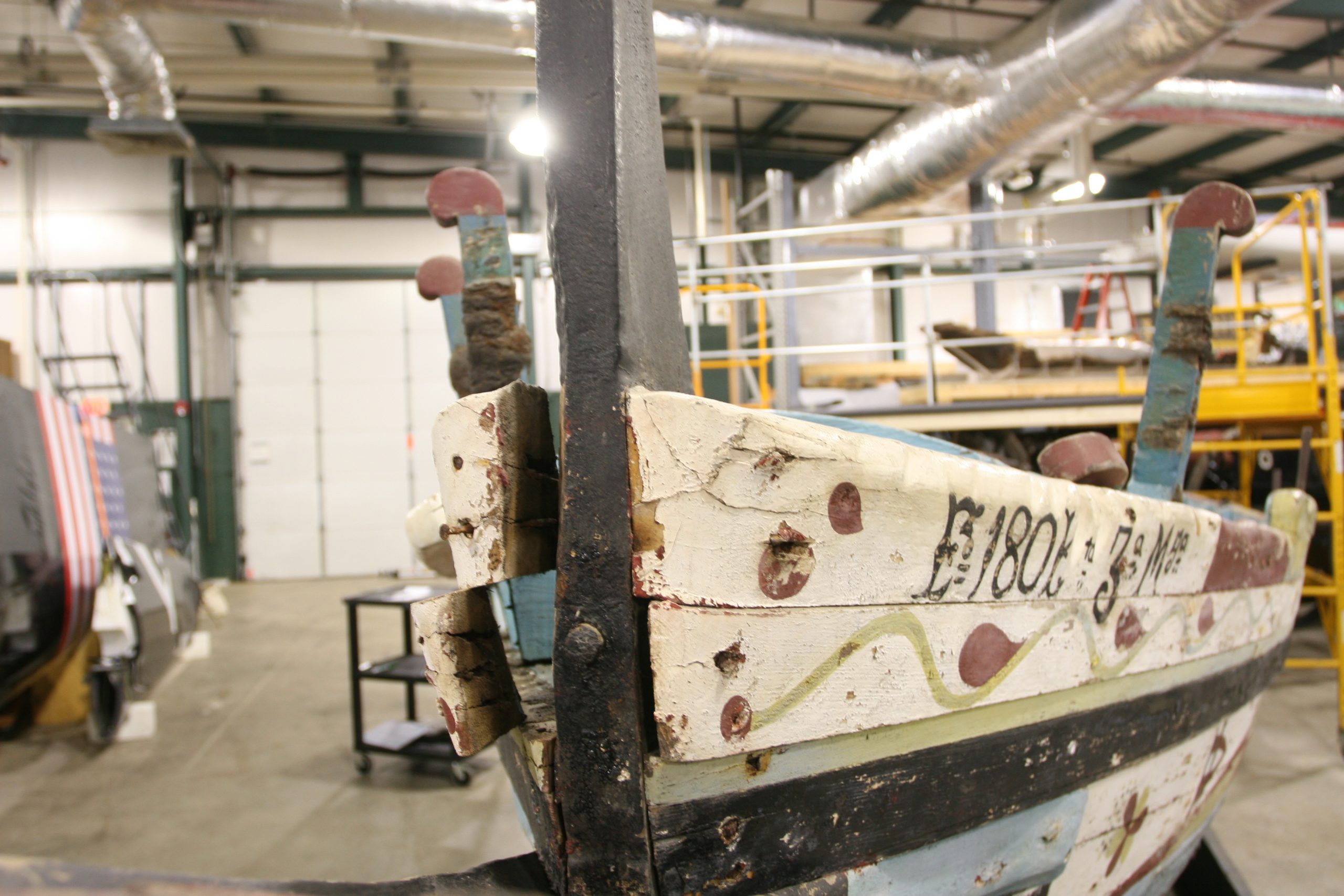
There is a lot going on in La Isabel and with such a robust history there are several steps I plan to complete to ensure we fully understand its condition and can create an appropriate treatment plan:
1. Fully document La Isabel (photography, photogrammetric modeling, orthomosaics)
2. Research its history and construction
3. Map its structure and condition issues
4. Perform fiber and wood analysis.
I’ll be writing about each of these steps as we move along, so stay tuned for each step!
Step One: Documentation
At The Mariners’, we’re very lucky because we have the capability to create photogrammetric (3D) models and orthomosaics (static images) of our artifacts. This is particularly helpful for large objects because, as you can imagine, it’s a little overwhelming trying to fully understand a 22-foot vessel sitting in front of you! This technology allows us to see the object as a whole while still being able to investigate individual components, making these tools extremely useful in the conservation process. Additionally, they allow us to share a digital view of La Isabel with people around the world, which is a wonderful asset during this digital age!
Before we could do all of that, though, we had to bring La Isabel out of storage so it could be front and center:
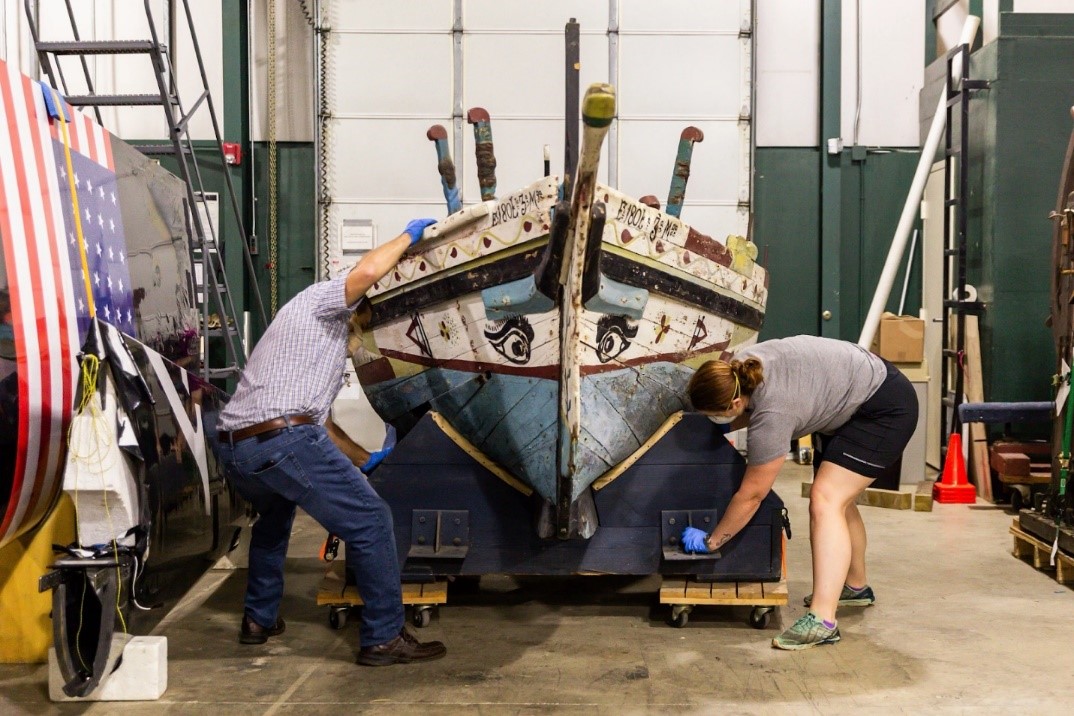
The first step in creating models/mosaics is extensive photography. I started by photographing the entire exterior of the boat from multiple angles to ensure I fully captured La Isabel’s structure. After that, we built a platform so that I could take photos of the interior as well.
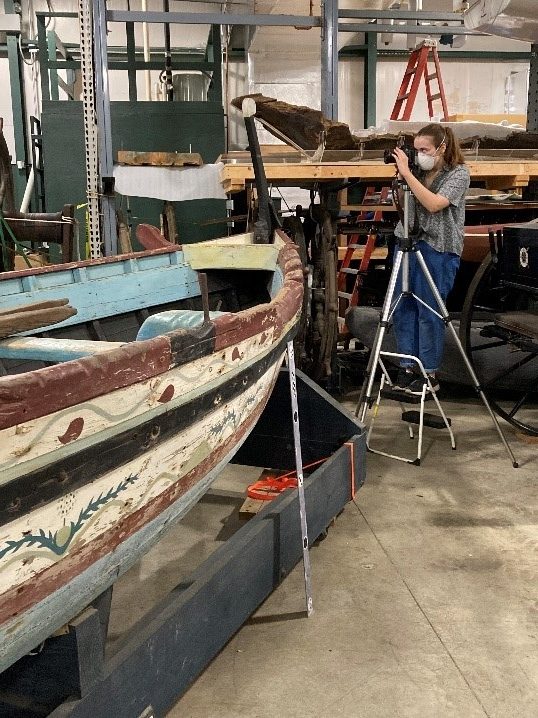
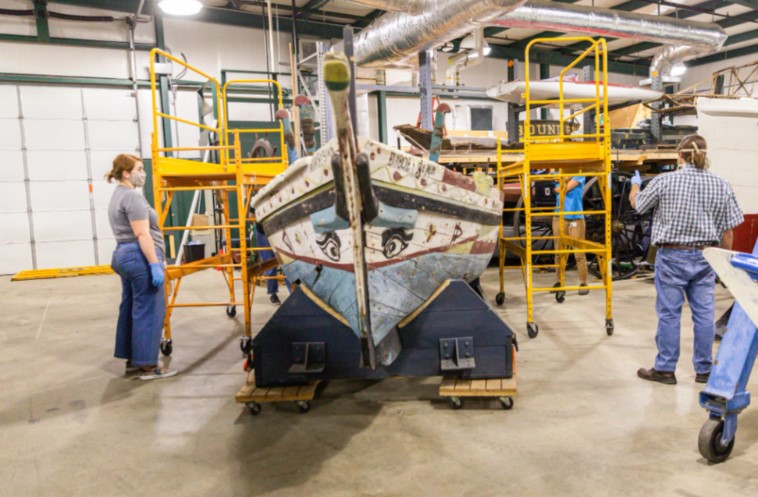
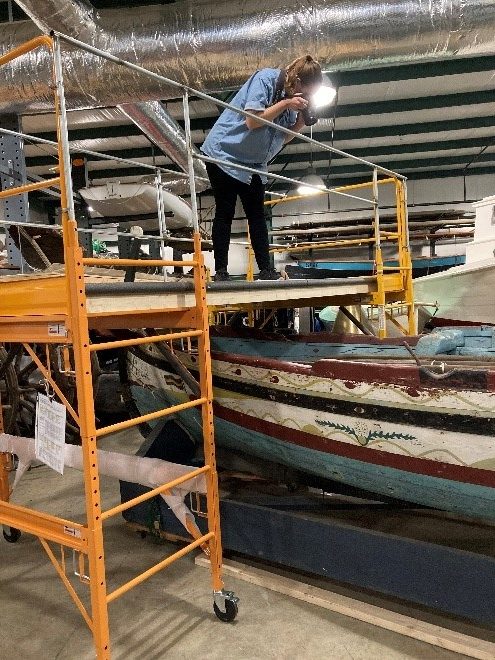
Once I had all the photos, I could put them in a modeling software and create an initial rendering of the boat so we could begin to get an idea of what our model will look like!
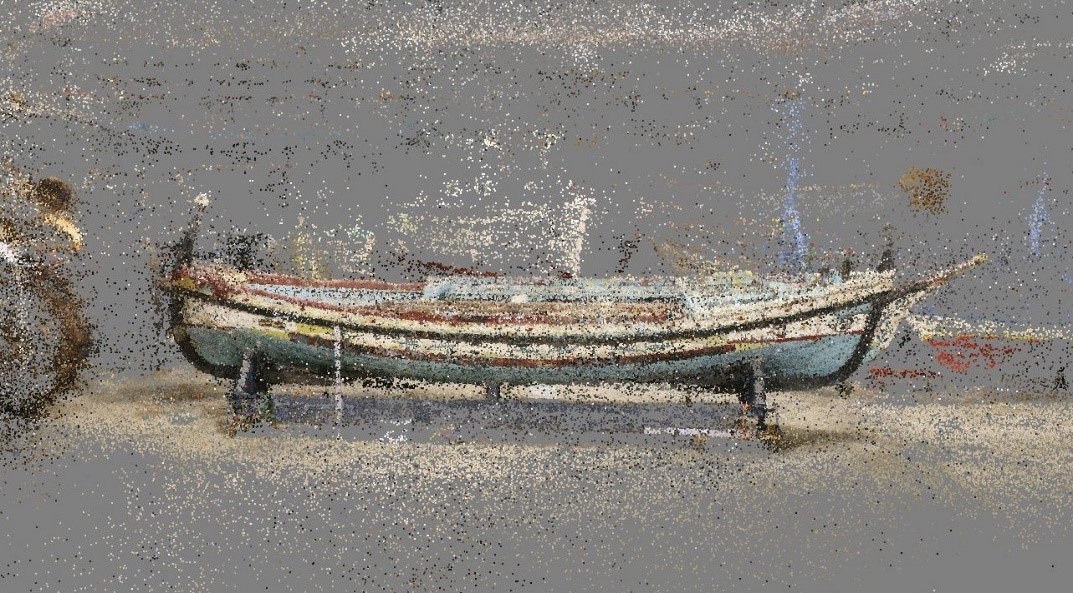
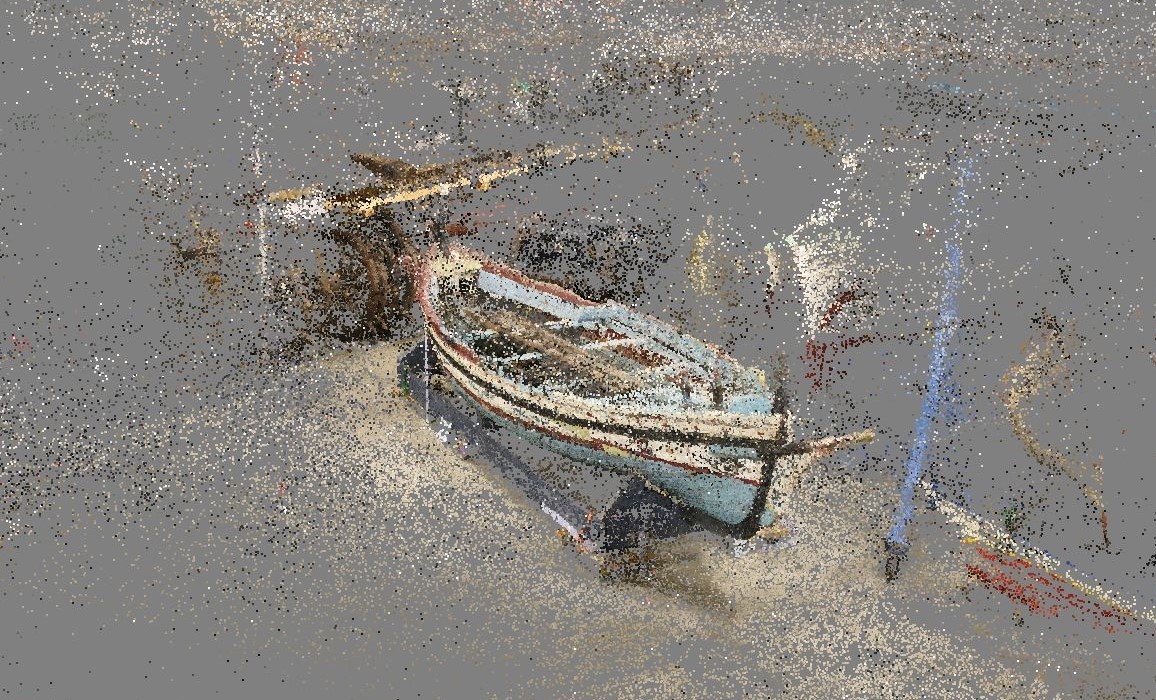
Essentially what the software is doing is picking up points from the images and stitching them together. However, in this initial rendering, the software doesn’t know exactly what part of the photo to focus on, so we’re seeing a lot of background surrounding the boat.
The current step I’m working on is mitigating this issue through a process called “masking”, which involves going through each picture and carefully outlining the object so the program doesn’t pay attention to the background. Although this is a time-consuming process, it’s definitely worth it because we’ll have a very clear and precise final model in the end!
From this work, I’ll be able to build our photogrammetric model and orthomosaics so they can assist me as I proceed to the next steps of understanding and mapping the boat’s structure and condition.
Although I’ve only just begun this project, I’ve already learned so many interesting things about this vessel and large artifact documentation in general. I can’t wait to keep sharing this journey with all of you as we work toward getting La Isabel the TLC it deserves!
Sources
González, I.M. (2018) “The boats of Jabega: Rosario y Ana, A Case Study”, Master thesis, Syddansk Universitet, Denmark.
